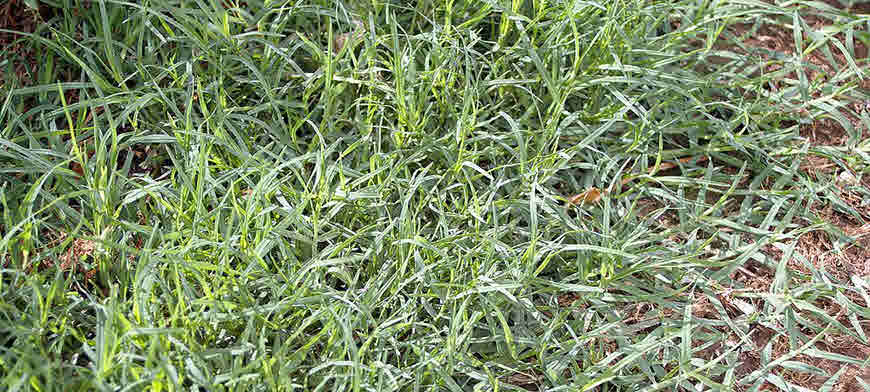In Hinduism, Durva(Doob) is one of the most sacred plant, only second to Tulsi. It is a plant used in numerous religious ceremonies since Vedic times as well as for medicinal purpose in Indian Ayurvedic medicine system. On Durvashtami Vrat (in Bhado), Hindu women worship Durva and fast. The rings made of this grass is worn during Hom, Puja and Yagya. Durva is also offered to Lord Ganesh during worshiping. It is one of the ten auspicious herbs that constitute the group Dashapushpam in Ayurveda.

Read Medicinal Use Of Doob Grass(Cynodon Dactylon )
Overview
There must be some reasons, why this plant is considered so divine and inseparable from various Hindu ceremonies. Perhaps, this is due to its medicinal and therapeutic potential. This holy plant is full of medicinal properties. Its roots and leaves have many therapeutic properties.
Durva is found throughout the India as well as in many parts of world as common grass. Durva plant contains vitamin C, cartone, palmitic acid, triterpenoides, alkaloids, crude proteins, carbohydrates and mineral constituents, oxides of magnesium, phosphorous, calcium, sodium and potassium. Durva can be used both internally and externally for medicinal purpose.
Scientific Details
Scientific Classification, Kingdom- Plantae (Plants), Subkingdom -Tracheobionta (Vascular plants), Super division- Spermatophyta – (seed plants), Division- Magnoliophyta – (Flowering plants), Class- Liliopsida (Monocotyledons), Subclass- Commelinidae, Order- Cyperales
Family- Poaceae (Grass family), Genus- Cynodon, Species- Cynodon dactylon (L.) Pers. – Bermuda grass, Vernacular names
Vernacular Names
Sanskrit: Bhargavi, Doorwa, Granthi, Sveta, Hindi: Doorva, Doob, Tamil: Arugu, Aruvam-pillu, Mooyar-pul, Arugampul, Bengali: Durba, Kannada: Ambate-hullu, Garikae, Malayalam: Karuka-pulli, Marathi: Doorva, Haryali, Punjabi: Dub, Kabbar, Talla, Telugu: Garika, Gerike, Haryali, Urdu: Ghass
English: Creeping panic grass, Couch grass, Bahama grass, Bermuda grass, Dun grass, Devil’s grass, Doab grass, Doorwa, Dog’s teeth grass
Herb Description
Cynodon dactylon is a perennial grass. It is native to north and east Africa, Asia and Australia and southern Europe. Its plant is prostrate, creeping, stoloniferous, perennial;rhizomes rooting at every nodes;root system deep;stem creeping, long, slightly flattened, terete, glabrous, leaf blades grey-green, 2-15 cm long, 4 mm broad, flat to slightly keeled, edges rough, tip sharp;leaf sheath round, glabrous;ligule with ring of hairs or membrane;inflorescence spike, 2-5 cm long, 3 to 6 in a whorl;flowers spikelets with one perfect floret;glumes 2 mm long, lanceolate, acute at the apex, lower glume smaller than the upper;lemmas 2-8 mm long, 3-nerved, acute, pubescent or scabrous on the nerves;anthers 1.3 mm long, yellow;styles purple;seeds ovoid, about 1.mm long, yellow to reddish.
Parts used in Medicines
Durva Leaves
Durva grass contains Phenolic Phytotoxins (Ferulic, Syringic, P-coumaric, Vanillic, PHydroxybenzoic and O-Hydroxyphenil acetic acid).
The Ayurvedic Properties and action of Durva leaves
- Rasa: Madhura, Tikta, Kashaya
- Guna: Laghu
- Virya: Sheeta
- Vipaka: Madhura
- Karm: Kaphahara, Pittahara, Rucya
The recommended safe dosage of fresh juice of Durva plant, is 10-20 ml.
Durva root
Durva roots are fibrous, cylindrical, up to 4 mm thick, with minute hair-like roots arise from the main roots. These are cream in color. The roots of the plant contains Phenolic Phytotoxins and Flavonoids.
The Ayurvedic Properties and action of Durva roots
- Rasa: Madhura, Tikta, Kashaya
- Guna: Laghu
- Virya: Shita
- Vipaka: Madhura
- Karm: Kapha-pitta Shamak, Rakta Pitta Nashak, Daha ghna, Atisara ghna, Trptikara
The recommended safe dosage of fresh juice of Durva root is 5-10 ml.
External medicinal use of Durva
Durva or doob grass is haemostatic, refrigerant, healer, and antibacterial. It can be made into paste and applied on skin for treating skin problems and improving complexion. Doob is beneficial in treating skin cuts, wounds, abrasions and similar skin problems. Leaf paste application on wounds, cuts, haemorrhoids helps in better healing. Few drops of doob juice is put in nostril to stop nasal bleeding or Nakseer. For headaches, leaf paste is applied on forehead.
Internal medicinal use of Durva
Durva is used internally for treating epilepsy, hysteria, bleeding in dysentery, piles, haematuria, epistaxis, menorrhagia, diarrhea, raktapitta, syphilis, urinary tract infection and many other diseases.
Durva is useful in gynaecological problems related to uterus. It strengthen uterus and stops abnormal uterine bleeding. It is also useful in minimising risks of miscarriage and supports normal feotal growth. The decoction of Durva plant is given in the treatment of the kidney stones.
Durva also shows aphrodisiac property. It improves male fertility.
It is very important to clean the plant properly. Since it grows near the soil, the leaves can be easily contaminated. Therefore wash it carefully to remove all impurities from plant surface. Always collect medicinal plants from pesticide free area. Do not take medicinal herbs that grows along roads, sewage, drains and any similar polluted area.
Medicinal Use Of Doob Grass(Cynodon Dactylon )
Appreciate the compilations of herbs made. I went through some.
But, please change the photo. It is not Durva worshiped for Ganesha.
can you please send one pic bimbim.in@gmail.com, as i am from Varanasi, we used this grass only, it may look slightly different in different area.